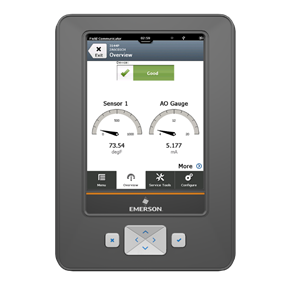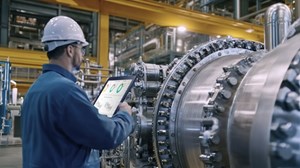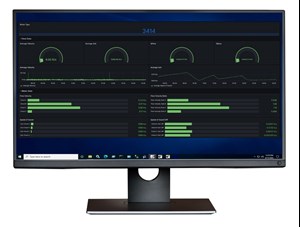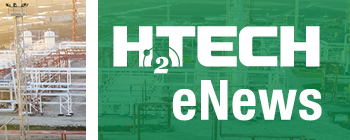News
Online Feature: Tomorrow’s competitive advantage is fueled by today’s investment in integration
D. MACKLEY, Emerson, Knoxville, Tennessee; and E. CYTRYNOWICZ, Emerson, Katy, Texas
As the world explores ways to generate sustainable electrical power, many companies have begun exploring the potential of hydrogen (H2) as a critical player in the emerging energy economy. At the most basic level, H2 potentially provides a zero-emission method for powering fuel cells used in electric vehicles, appliances and more. However, H2 plays another essential role in the electrification of the world—as an option for supporting and sustaining green energy generation as a fuel, either in its pure form or blended with natural gas.
Ultimately, H2 provides many opportunities for business growth to companies willing to innovate. However, H2 production and distribution require many critical elements to work in sync to ensure operational excellence across the value chain. Generation, transportation, distribution, monitoring and more are all critical to safe, efficient and profitable H2 operations—and if one of those elements fails, it creates challenges for all the other links in the chain.
H2 teams must ensure that every element of the production and distribution chain functions properly to reliably deliver product to customers without outages or miscalculations. Accomplishing this goal requires digital technologies, with automation systems critical to support safety from production through H2 transportation, while providing seamless integration across the technology stack.
Reliability drives efficiency. In most cases, an H2 facility has similar production assets to a power plant, such as gas turbines, critical compressors for both natural gas and H2, pumps, valves and other rotating machinery—all of which are subject to mechanical failure. Developing mechanical faults—such as bearing degradation, cracked or broken gears, reciprocating compressor valve and shaft anomalies, turbine shaft and blade issues, and others—can all cause unexpected asset failure and unplanned outages. Further complicating this scenario is the fact that H2 is more corrosive than natural gas, often leading to faster breakdown of essential assets.
In addition, the risk of asset failure is not limited to the assets inside the walls of a H2 generation plant. Critical assets such as compressors, pumps, process instrumentation and valves can also be found in liquefaction, transportation, storage and distribution facilities. Monitoring and maintaining these assets at peak performance is essential to running safe and efficient operations.
As a result, teams seeking operational excellence must focus on reliability. If any of a plant’s critical assets fail unexpectedly, the process may experience downtime, which not only impacts safety and efficiency locally, but can also cause problems with the transportation and distribution value chain.
Successfully navigating the potential for unanticipated failures across the H2 value chain requires instrumenting assets with predictive maintenance solutions. Today’s forward-thinking companies use powerful predictive maintenance technologies with embedded artificial intelligence (AI) analytics to monitor asset health across the value chain.
For monitoring critical equipment, many teams turn to modern API-670 protection systems. These solutions provide powerful protection and prediction, not only shutting down systems before they fail, but also enabling teams to acquire prediction data. Instead of waiting for a compressor or other critical assets to trip, teams using modern protection systems receive early warning of potential failure states, enabling them to intervene before an anomaly leads to an outage.
For essential and balance-of-plant assets, many teams implement AI-embedded wireless vibration monitors and edge analytics devices that offer autonomous monitoring and early warning of asset health changes. The best modern solutions cut through the complexity of data analysis, automatically turning raw data into actionable information, and then delivering alerts to technicians’ mobile devices for fast response, or to any other device capable of hosting a web browser, such as a laptop or a tablet.
Armed with a quick, intuitive view of enterprise automation, asset health and actionable insights, technicians of any experience level can address problems quicker and more effectively schedule their activities. In addition, because modern asset monitoring devices collect data continuously and automatically, plant personnel can eliminate much of the time spent on manual rounds, giving them the opportunity to focus on higher-value activities that increase operational efficiency.
Ensuring correct calculations. Locking in asset health is a critical part of ensuring safe and efficient H2 operations. However, it is also essential to ensure that the product—whether pure H2 or a blend with natural gas—is properly transported and dispensed across the company’s network. As H2 moves from production to liquefaction, transportation, storage and distribution, there are many points where the product must be accurately measured to meet regulatory and contractual obligations. Here too, digital technologies play a critical role in ensuring highly efficient operations.
Remote terminal units (RTUs) are a critical element for tracking the molecules flowing through a pipeline. For companies transporting H2 and/or natural gas blends, implementing modern RTUs is of particular importance. RTUs can poll information from Coriolis, positive displacement and other types of meters to track the volumetric and energy values of H2 as it passes through each stage of the value chain. However, when dealing with H2 and H2 blends, the calculations are often more complex, so companies will want to implement modern RTUs that not only provide the most current algorithms for accurate calculation but also can be easily updated as needs and regulations change.
When companies properly track the movement of H2 across their value chain, they gain better visibility into the profitability of operations, improve safety through better leak detection, promote customer satisfaction with more accurate reporting of deliveries and billing, and more easily meet regulatory requirements. Operational excellence thrives on data, but that data is only useful if it can be collected and calculated properly.
Bringing data together. Reliability data and RTU-based flow calculations are both critical elements of H2 production and transport operations. When combined with additional data from flowmeters and pipeline management software, RTUs can help paint an overall picture of a company’s entire operation.
However, managing this big picture becomes much more complex when data is siloed across various disparate digital technologies throughout a company’s assets. Today’s forward-thinking operations and reliability teams are navigating this issue by purposefully implementing digital technologies that seamlessly integrate into a boundless automation vision for unlimited data mobility (FIG. 1).

Implementing many different sensors, devices and software packages from a wide array of solution providers, each using its own proprietary communication methods, quickly builds silos of data. Teams wanting to consolidate this information for viewing and analysis must connect many different systems through a complex and fragile web of engineered interfaces. In most cases, building those interfaces is possible, but it is extremely time consuming, and requires deep expertise. Moreover, even when disparate systems are connected, someone must have the time and skill to maintain those connections throughout the lifecycle of all the solutions.
Conversely, when a company’s RTUs, wireless monitors, protection systems and software solutions are designed to integrate seamlessly, teams can consolidate all critical data into a single asset performance management (APM) platform. The most modern versions of these platforms include embedded AI and machine learning analytics for better, faster visibility into the overall health of operations.
Many companies are taking advantage of this seamless integration to bring all their data into enterprise automation software, where they can monitor and manage the health of all assets across the value chain from a single, intuitive dashboard. Using such a solution, teams can continuously confirm that operations are functioning accurately and delivering the right amount of product at the right time during every step of the value chain, while simultaneously ensuring they will be able to maintain continuous operations through real-time visibility into the health of all assets (FIG. 2).

Additionally, the companies capturing the most value from their automation investments are also implementing open-source edge solutions to bring even more data into the cloud for enterprise monitoring, support and analytics. Instead of polling limited data from a control system, edge solutions empower teams to bring nearly any operational data point into the cloud and APM platforms more quickly, supporting better data-driven critical business decisions. Armed with such insights, teams can more easily optimize their operations, not only at the local level but across the enterprise (FIG. 3).

Better data, better business. As more players continue to enter the H2 market, eliminating the roadblocks to operational excellence will become increasingly essential for maintaining competitiveness. Many technologies can help companies navigate the complexities of H2 manufacturing, but choosing seamlessly integrated solutions helps eliminate the risk of unintentionally creating data silos that impede visibility and innovation.
Following a boundless automation vision for data is a critical step toward building a foundation of data mobility that will lead to better outcomes and faster return on investment. This approach also helps companies to more easily build and configure the H2 operation data superhighway that will drive the analytics engines to secure competitive advantage through better business practices across the enterprise.
About the authors

DREW MACKLEY has more than 25 yr of experience in the predictive maintenance industry. In that time, he has worked with customers to establish and grow machinery health management programs in various industries and locations globally. He works with customers and other industry professionals on incorporating best practices and modern technologies in their asset monitoring digital transformation journey for efficiency, safety and performance improvements. Mackley earned a BS degree in electrical engineering from the University of Tennessee.

ERIC CYTRYNOWICZ is the RTU product manager for Emerson’s Energy and Transportation Solutions business and has more than 20 yr of experience in the energy industry. He is responsible for the development of scalable, high-performance automation that also offers ease-of-use and simplicity. Cytrynowicz earned a BS degree in chemical engineering from Penn State University and an MBA from Temple University.

